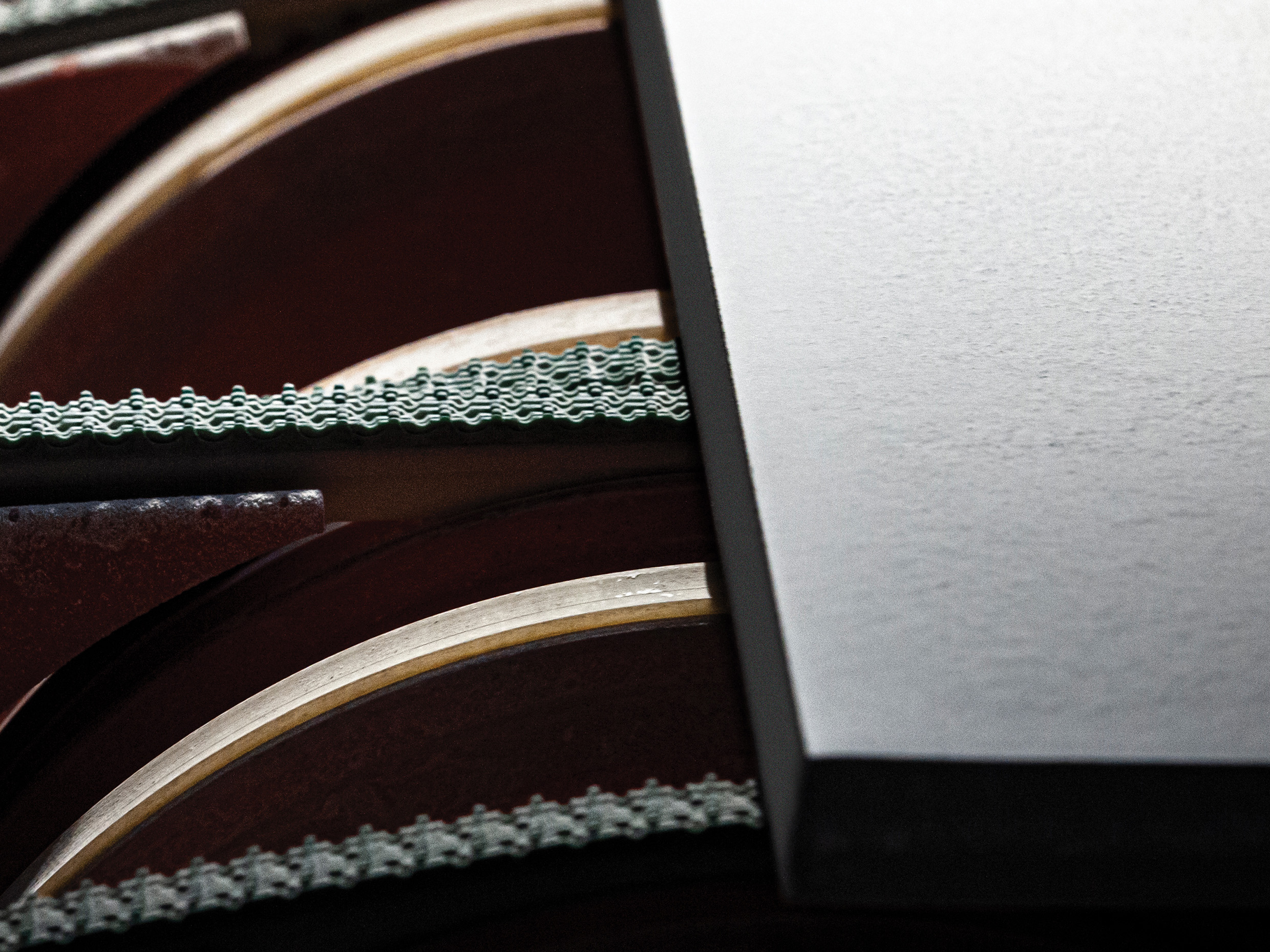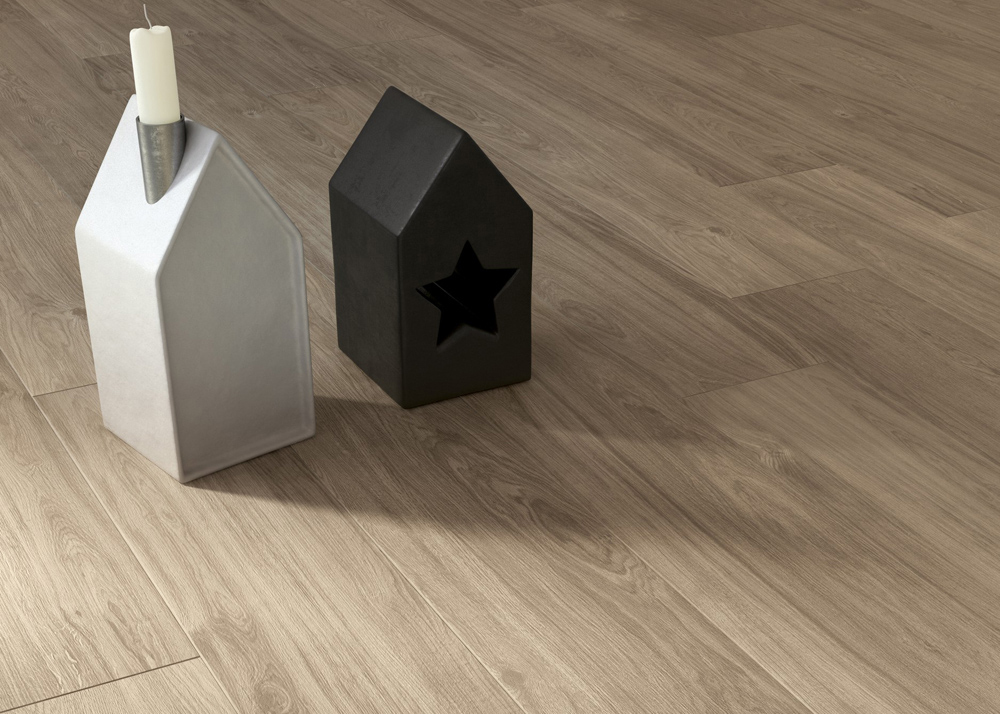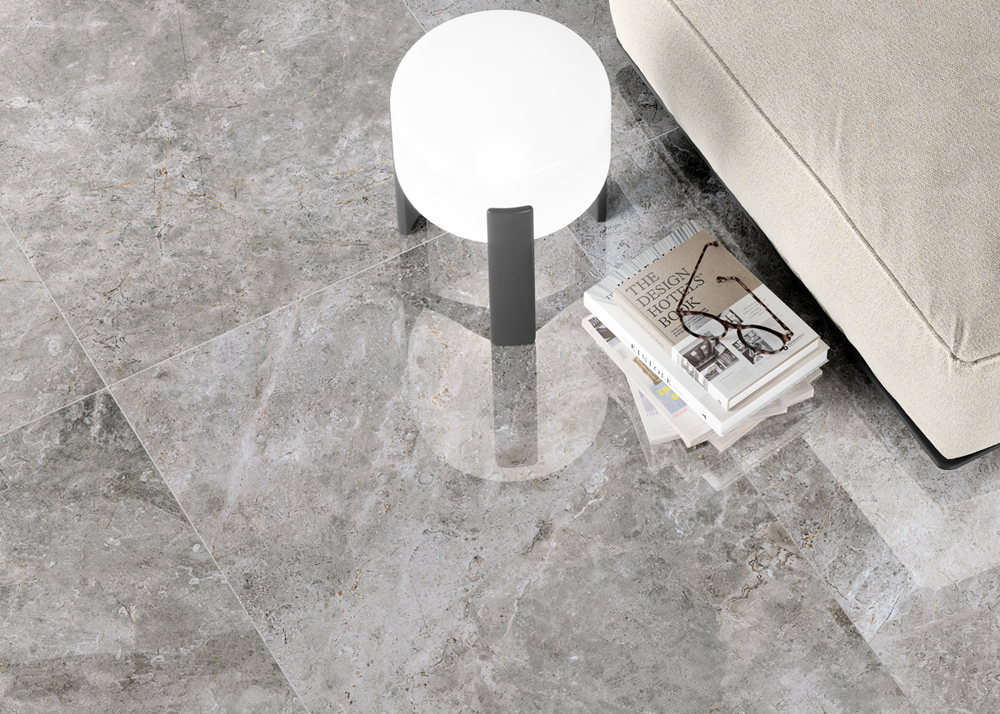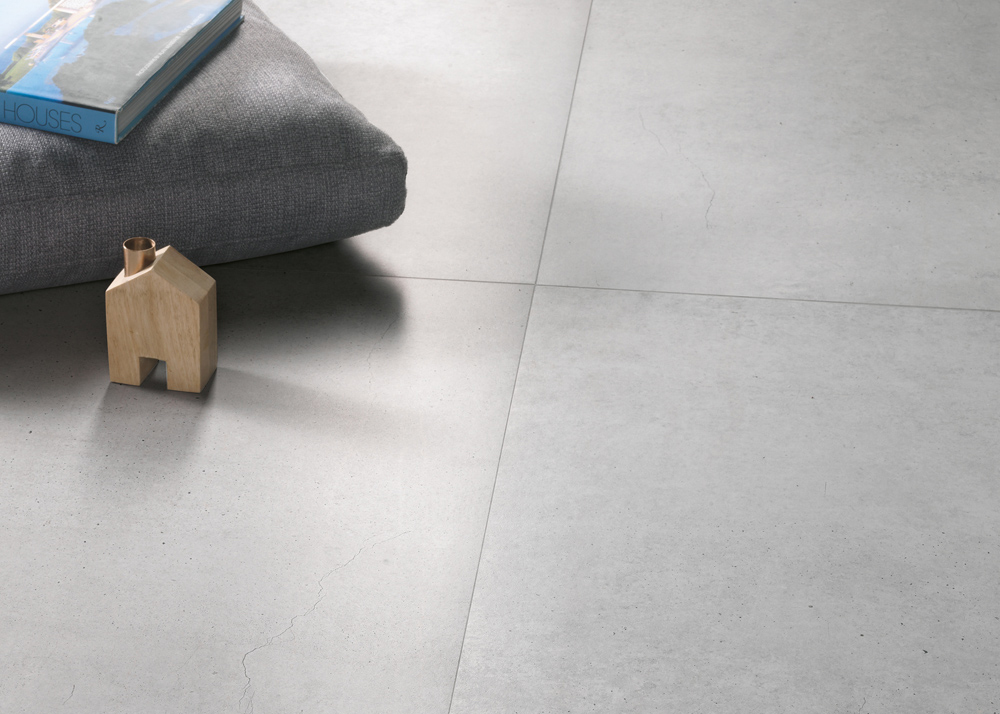Understanding Rectified Tiles
A rectified tile is a type of ceramic or porcelain tile that has been mechanically trimmed after firing to achieve a precise, uniform size. This process, known as rectification, eliminates slight variations in shape, allowing for installation with minimal grout spacing and creating a sleek, continuous surface.
The rectified tile meaning goes beyond edge alignment – it refers to a specialised manufacturing method that enables clean lines and sharp angles. The result is a refined, seamless finish that enhances spatial continuity and supports modern design aesthetics.
Definition and technical process
What is rectified tile? It’s a term used to describe porcelain or ceramic tiles that have been precisely trimmed after firing to ensure perfectly straight edges and uniform dimensions. This step, carried out with mechanical grinders, is what differentiates rectified tiles from standard alternatives.
In technical terms, the rectification process relies on high-precision equipment capable of producing tiles with extremely fine tolerances. This attention to detail ensures each piece aligns perfectly with the next, a crucial factor in achieving a refined, continuous finish.
Rectified vs non-rectified tiles
The difference between a rectified vs non rectified tile lies primarily in the edge finish and the resulting installation method. While standard solutions have uneven edges due to the firing process, rectified tiles are mechanically trimmed to ensure perfect uniformity. This allows for tighter joints, minimal grout lines, and a continuous visual effect.
Choosing between the two often comes down to the desired aesthetic and the level of precision required. Rectified tiles offer a modern, seamless look, making them a preferred choice in contemporary interiors. For those wondering are rectified tiles better, the answer depends on context – but in terms of dimensional accuracy and design continuity, they provide superior results.
Benefits of rectified tile flooring in modern spaces
One of the main advantages of rectified tile flooring is its ability to deliver a flawless appearance. Thanks to their precisely cut edges, they can be installed with extremely narrow joints, which creates an almost continuous surface across the floor. This visual consistency supports minimalistic and elegant interiors, while also reducing the accumulation of dirt.
From a functional perspective, rectified porcelain floor tile performs well in both residential and commercial environments. Kitchens, bathrooms, and open-plan living areas particularly benefit from the clean layout and exact alignment these tiles enable. In professional spaces, such as showrooms or offices, rectified solutions reinforce a sense of precision and refinement.
Aesthetic and functional advantages
Visually, rectified tiles offer a clean, uninterrupted surface that complements contemporary architectural trends. Their precise edges and minimal grout lines contribute to a sleek, refined look. This level of uniformity is especially valuable in open-plan layouts, where spatial flow and material continuity play a central role.
Functionally, these tiles are known for their exceptional durability and ease of cleaning. The narrow joints reduce the build-up of debris, while the high-quality porcelain body withstands heavy traffic and wear. For architects and designers, this combination makes rectified solutions a reliable choice in demanding environments such as luxury homes, hotels, or commercial interiors.
Versatile applications across residential and commercial projects
A rectified porcelain tile adapts to a wide variety of settings, from minimalist residential interiors to high-traffic commercial areas. Its ability to deliver visual uniformity and technical precision makes it ideal for both indoor and outdoor installations.
In more specialised applications, such as luxury offices or public spaces, designers often opt for rectified wood look tile to combine the warmth of natural textures with the performance of porcelain. The sharp edges and calibrated dimensions allow for complex patterns and large-format solutions that align perfectly with modern construction standards.
Refin’s innovative approach to rectified tile technology
At Refin, we’ve embraced advanced manufacturing processes to perfect the production of rectified tiles. Our focus on precision and surface uniformity drives us to adopt cutting-edge techniques that guarantee the highest dimensional accuracy across every single piece. This approach defines our collections, including Etherea, Upside, Beat, Eik, and Reliefs.
We offer a broad and versatile colour palette, ranging from soft neutrals to bold, multicoloured finishes – aimed to meet the needs of architects and designers. By combining visual harmony with technical reliability, we support seamless integration into both minimalist and richly decorative settings.
Product offerings and revolutionising styles
Our product range includes a wide variety of surfaces, from wood and marble to stone, concrete, resin, and travertine looks. Each rectified tile is crafted to deliver consistency in size and finish, allowing designers to work with confidence.
Thanks to our advanced manufacturing techniques, we can produce surfaces with sharp, calibrated edges and stable dimensions. This level of precision enhances the installation of large formats and ensures seamless visual continuity across rooms.
Expert installation techniques and best practices
Installing rectified tile requires careful planning and technical precision. A well-executed layout begins with accurate surface preparation and a detailed dry-fit strategy, especially when working with large-format pieces. Levelling systems and fine-toothed trowels are commonly used to ensure flush positioning across adjoining tiles.
At Refin, we support the work of experienced installers by providing rectified tiles engineered for precision. When handled correctly, our products contribute to material efficiency, cleaner lines, and seamless layouts – whether used in private residences or large-scale commercial environments.
FAQ
What is a rectified tile?
A rectified tile is a porcelain or ceramic tile that has been mechanically trimmed after firing to ensure perfectly straight edges and uniform size. This process, known as rectification, allows for very narrow grout joints and a seamless appearance once installed. Unlike standard tiles, rectified tiles offer greater dimensional accuracy, making them ideal for modern, minimalist interiors where visual continuity is essential. While the surface finish remains unchanged, the edge precision significantly enhances both aesthetic appeal and installation quality.
What is the difference between rectified and non-rectified tile?
The main difference is in the tile’s edge finish. Rectified tiles are trimmed after firing to achieve exact dimensions and sharp, uniform edges. This allows for closer placement and minimal grout lines. Non-rectified tiles retain their natural, slightly irregular edges, which require wider grout joints to accommodate size variations. Rectified tiles are ideal for clean, continuous surfaces, while non-rectified options may be more suitable in rustic or traditional settings where visible joints add to the aesthetic.
Do rectified tiles need grout?
Yes, rectified tiles still require grout, even though the joints can be very narrow. Grout ensures structural stability, accommodates slight movement, and prevents moisture or debris from penetrating between tiles. However, the tight edge tolerances of rectified tiles allow for minimal grout lines – typically 1–2 mm – creating a more seamless look. Using grout is essential to maintain both hygiene and durability, especially in wet or high-traffic areas. It also protects the integrity of the installation over time.
Are rectified tiles harder to lay?
Yes, rectified tiles can be more demanding to install due to their sharp edges and tight tolerances. Precision in substrate levelling and tile alignment is essential, as small imperfections become more visible with minimal grout spacing. Expert installers often use levelling systems and layout planning to ensure flawless results. While installation may take more time and care, the final appearance is cleaner and more refined – making the extra effort worthwhile in many design contexts.
How do I know if my tile is rectified?
You can usually identify a rectified tile by inspecting its edges. Rectified tiles have perfectly straight, sharp edges, often forming clean 90-degree angles. They feel smooth and uniform when aligned edge to edge. This contrasts with non-rectified tiles, which may have slightly rounded or irregular sides. Packaging or product specifications typically indicate whether a tile is rectified. If you’re unsure, at Ceramiche Refin we are available to provide all the technical details you need to make an informed choice.



